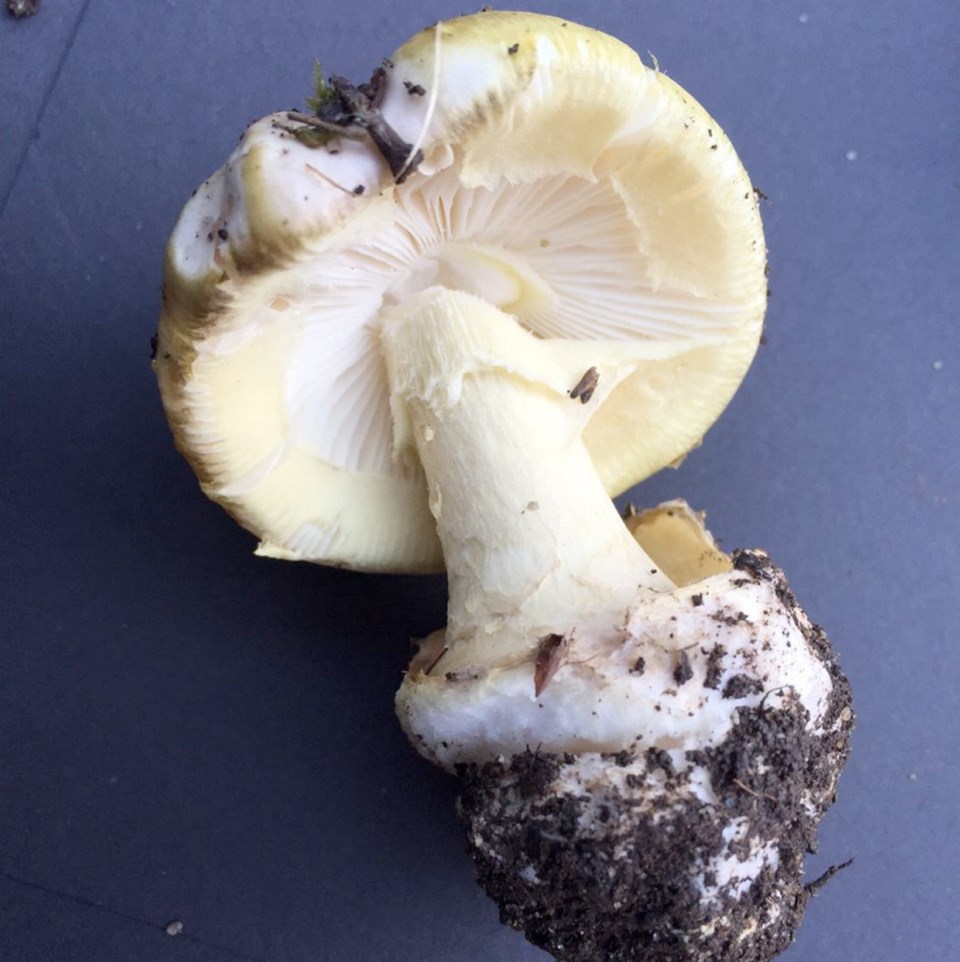A three-year-old Victoria boy has died after eating a “death cap” mushroom found downtown, prompting health officials to pursue an education campaign about the invasive species in the wake of the tragedy.
The boy and his family harvested the mushroom just steps from a sidewalk on a residential property last week, Island Health’s chief medical officer Dr. Richard Stanwick said.
The boy was treated at Victoria General Hospital, then flown to a hospital in Edmonton, where he died Tuesday night.
This is the first recorded death in B.C. from a death cap mushroom.
Stanwick has not spoken with the family since the death, but said the boy’s father had emphasized they wanted to spread the word about the danger.
Death caps are the deadliest mushrooms in the world, responsible for about 90 per cent of mushroom-related deaths. They attack the liver with three toxins, Stanwick said.
“Unfortunately, being a three-year-old, the child had yet another disadvantage of having a smaller liver. ... Had an adult ingested it, it’s speculation, but it might have been different,” he said.
Tests to identify toxins in the boy’s body to confirm the mushroom species are ongoing. But initial study of specimens collected suggests that “in all probability,” the poisonous mushrooms he ate were death caps, Island Health said.
Death-cap mushrooms, or amanita phalloides, are mainly white, with a white or yellowish stem. Their caps range from yellow-green to light brown and are round when young, then flatten with age.
The species is not native to B.C. and first appeared in Victoria about seven or eight years ago, with the importing of certain hardwoods, said Andy MacKinnon, a member of the South Vancouver Island Mycology Society.
“The fungus that produces them grow attached to the roots of European trees that people have planted, like European oaks or hornbeams or chestnuts,” MacKinnon said.
As a result, they’re more common in residential areas and boulevards than forested areas, he said. Death caps have also been noted in the Vancouver and Fraser Valley regions and resemble another species, “paddy straws,” which are edible and popular in Asia.
Symptoms typically appear within eight to 24 hours of ingestion. The first symptoms are gastro-intestinal, including vomiting and diarrhea. Then the patient will start to feel better, before being struck by a “devastating attack on the liver,” Stanwick said.
While foragers are encouraged to educate themselves before mushroom hunting, Stanwick said this case shows the mushrooms are within reach of children. “This is something now in our environment that poses a risk to the entire community.”
Dogs are also vulnerable, he said.
Island Health would not say where the Victoria family found the mushrooms, but said remaining ones were removed from the site.
Stanwick has alerted his counterparts in other regions and said a public campaign through signs and other means is a priority.
“These mushrooms were found literally feet away from a public sidewalk. This wasn’t people who had wandered into the wilds of Beacon Hill Park,” he said.
- - -
Island Health’s tips to stay safe while mushroom hunting
• If you are unsure or uncertain, don’t eat it.
• Only pick and eat mushrooms that are well known, distinct and easily identifiable.
• Eat small amounts.
• If you suspect you’ve consumed a poisonous mushroom, call the B.C. Drug and Poison Information Centre at 1-800-567-8911 and seek medical attention or call 911. Keep a sample of the mushroom or food that was eaten.



